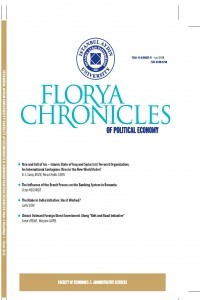Adapting to Environmental Change: The Importance of Organizational Agility in the Business Landscape
Adapting to Environmental Change: The Importance of Organizational Agility in the Business Landscape
Business organizations operate in an uncertain environment that is constantly changing. With this rapid change, there are certain business risks for companies, such as missing opportunities and making the wrong decisions. This risk factor can cause companies to downsize or become unable to operate. On the other hand, uncertain environmental conditions can create their own conditions and provide a great opportunity. Organizational agility is an important factor that can enable companies to succeed in an uncertain and ever-changing environment. Organizational agility enables organizations to both gain competitive advantage and sustain their existence. Organizational agility helps organizations to be more flexible and adapt to environmental changes. This paper focuses on the importance of organizational agility under environmental uncertainty. It discusses the relationship between organizational agility and the concept of environmental turbulence, which has recently become a better description of environmental uncertainty. In this context, a comprehensive literature review was conducted and the relationship between the concepts of organizational agility, environmental adaptation, environmental change and environmental turbulence was examined. This paper contributes to future research by consolidating the literature on environmental turbulence and organizational agility.
___
- [1] Brozovic, D. (2018). Strategic flexibility: A review of the literature. International Journal of Management Reviews, 20(1), 3-31. [2] Cai, Z., Liu, H., Huang, Q., & Liang, L. (2019). Developing organizational agility in product innovation: the roles of IT capability, KM capability, and innovative climate. R&D Management, 49(4), 421-438. [3] Calantone, R., Garcia, R., & Dröge, C. (2003). The effects of environmental turbulence on new product development strategy planning. Journal of Product Innovation Management, 20, 90–103. [4] Cegarra-Navarro, J. G., & Martelo-Landroguez, S. (2020). The effect of organizational memory on organizational agility: Testing the role of counter-knowledge and knowledge application. Journal of Intellectual Capital, 21(3), 459-479. [5] Cepeda, J., & Arias-Pérez, J. (2019). Information technology capabilities and organizational agility: The mediating effects of open innovation capabilities. Multinational Business Review, 27(2), 198-216.
- ISSN: 2149-5750
- Yayın Aralığı: Yılda 2 Sayı
- Başlangıç: 2015
- Yayıncı: İstanbul Aydın Üniversitesi
Sayıdaki Diğer Makaleler
LEADERSHIP COMPETENCY AND EMPLOYEE PERFORMANCE IN ORGANIZATIONS
Sezer AYAZ, Ahmad Noman HAIDARI
Adapting to Environmental Change: The Importance of Organizational Agility in the Business Landscape
PAZARLAMA LİTERATÜRÜNDE BİLİNÇLİ FARKINDALIK KAVRAMININ BİBLİYOGRAFİK ANALİZİ
